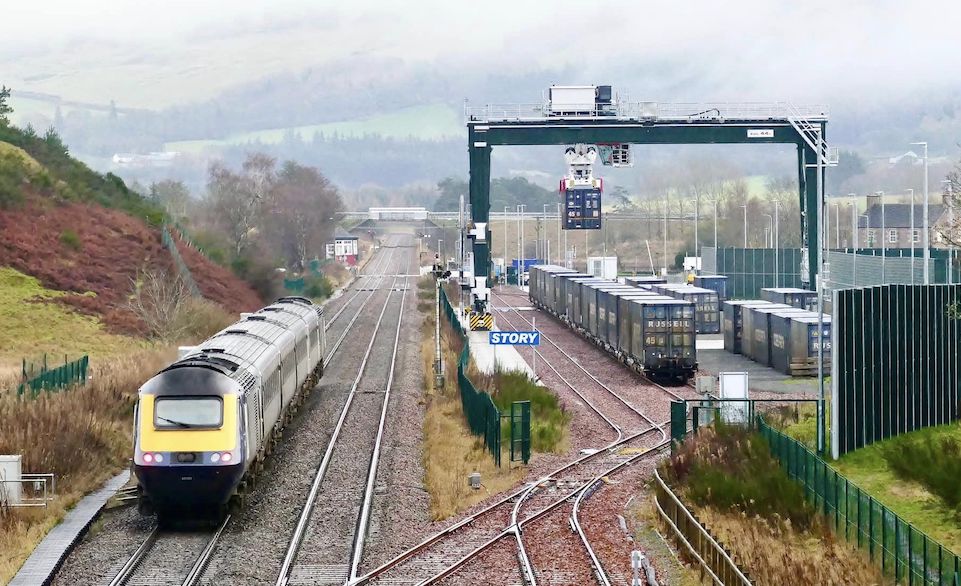Freight figures but not top priority in Scottish transport plans

Scotland’s government, which has devolved repressibility for transport matters, has published its primary policy document, the second Strategic Transport Projects Review, confirming its key priorities for future transport investment. Despite strict decarbonisation targets, there is still disappointment that the level of rail priorities is not matched by the continued emphasis on truck road improvements, particularly the main route between Central and Highland Scotland.
Scotland’s second Strategic Transport Projects Review (STPR2), has highlighted the impact of the pandemic on the Finacial viability of the passenger rail network. However, it says the sector must meet changing passenger and freight requirements and achieve the traffic growth required to meet net zero targets.
Fails to note light logistics
The report, which is the direct result of transport policy, makes the case for freight development in Scotland, and on cross-border links with England. “For freight, rail is often suited for longer-distance bulk [and] intermodal freight”, is the rather obvious conclusion, although it fails to note the potential for light logistics. “Freight investment should be targeted on corridors from the Central Belt [the densely populated area between Glasgow and Edinburgh] towards Aberdeen, Inverness and cross-border routes.”

STPR2 recommends a programme of strategic rail enhancements to improve journey times and increase capacity. For the Highland Main Line, says the report, these would include new and longer passing loops with more flexibility and permissible speed increases. However, there is no commitment to making the route fully double tracked. This has been a matter of considerable debate in Scotland, especially as the parallel road route is being upgraded to entirely dual-carriageway.
Junction and gauge clearance issues
The report does however identify a significant restraint on the growth of rail freight in Scotland. The lines that connect the Central Belt with Perth, and on to Dundee and Aberdeen, are plagued with junction and gauge clearance issues. “Improvement programmes would include junction upgrades and permissible speed increases”, says the report. “Opportunities would be taken to increase gauge clearance to permit taller and wider trains.”
While the STPR2 document makes overtures towards making the network more capable of carrying traditional bulk and intermodal loads, it overlooks that the light logistics market could be better served by the existing network. However, express parcels traffic, of the sort already operating to Mossend near Glasgow (by cross-border operator Varamis) and the Royal Mail traffic to the dedicated terminal at Bellshill (also near Glasgow), could potentially operate to all of Scotland’s cities, via the existing passenger network. Light logistics operators are looking at utilising excess capacity on passenger services, or running dedicated trains, formed of repurposed passenger stock which, by definition, already copes with the clearances on Scotland’s network.
Decarbonising the rail network
The government in Edinburgh has already committed to replacing ScotRail’s diesel passenger fleet. Most of that will be achieved with conventional overhead wires. “Electrification would improve journey times and strengthen reliability of both freight and passenger rail services”, notes the STPR2 document. “Capacity could be expanded through the use of longer trains and timetable efficiencies achieved from improved acceleration. These provide indirect benefits for passenger and freight movements and would encourage a switch from road to rail.”

A significant amount of freight needs to shift from road to rail or water, argues the report. “The development of a network to facilitate behavioural change and modal shift would be enabled by the implementation of zero emission vehicles and infrastructure transition”, it says.
The price tag is missing
That zero-emissions initiative is a hint at the sort of last-mile support network that would facilitate a significant rail express logistics operation. “STPR2 recommends the Scottish Government brings together public and private sector organisations to introduce incentives and best practice to establish more efficient, environmentally friendly practices within the freight industry, including promoting sustainable transport options to encourage modal shift, and enable the potential to reduce the number of goods vehicle movements on the road network.”
The document recommends an evolution of the existing grant and support schemes to encourage a modal switch. However, what it doesn’t say is how all the more than forty recommendations will be paid for. Thereby hangs the major contention with the Strategic Transport Projects Review. The price tag is conspicuous by its absence.
You just read one of our premium articles free of charge
Want full access? Take advantage of our exclusive offer





Love that”devolved repressibility” for freight in the very first line!
Love that “devolved repressibity” commment in the very first line!
“More flexibility”, thus added resiliency is requested – and needed!
All other modes, those robust, resilient and redundant, decisively add capacity – for lower costs…
Now, “elephant in room” has to be acknowledged!
(Short heavy trains is better than long…)
Reiliency, meeting with market demand, shall include needed upgrading of the railways!
(With now needed shift to a redundant electrification, batteries will mean added tara, etc., etc…)
A resilient, a New Old Railway is needed!